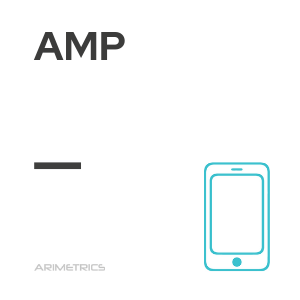
Definition:
AMP, an acronym for Accelerated Mobile Pages, is an open source project that aims to improve the browsing experience on mobile devices. AMP was developed to allow mobile content to load instantly anywhere, thus addressing the difficulties users often face when browsing the Internet from their phones. The implementation of AMP significantly improves the navigability of web pages and, as a consequence, their search engine optimization(SEO).
Origin and Evolution of AMP
The AMP project was announced by Google in October 2015 in response to the growing need to improve the browsing experience on mobile devices. With the increased use of smartphones to access the internet, it became apparent that many traditional websites were slow and poorly optimized for these devices, resulting in an unsatisfactory user experience. AMP was designed as a framework to allow publishers to create mobile-optimized content that would load quickly, regardless of the user’s internet connection.
The initiative was supported by a wide range of companies and organizations, including news publishers, content platforms and web developers, who collaborated in the creation and standardization of AMP guidelines. Since its launch, AMP has evolved significantly. Initially focused on creating static content pages, AMP has expanded its scope to include interactive applications, e-commerce and other types of dynamic content. In 2016, new features were introduced, such as integration with ads and the ability to use AMP in emails, which further expanded its functionality. Over the years, AMP has been adopted by numerous websites and content publishers, and has become an industry standard for mobile on-page optimization. However, it has also faced criticism and debate about its impact on the open web and dependence on Google. Despite this, AMP remains a valuable tool for improving speed and user experience on mobile devices.
Operation of the AMP
Accelerated mobile pages are designed to load in any browser or application. AMP files use a variety of technical and architectural approaches that prioritize speed, thus providing a faster user experience. The goal of AMP is not to homogenize the presentation of content, but to establish a common core that accelerates page load times. It is important to note that the use of AMP does not affect the advertising system; a page that uses AMP HTML can continue to choose its ad networks and formats according to what it considers most appropriate.
MPA Structure
AMP is a way to build static content web pages with very fast performance. Its structure can be divided into three distinct parts:
- AMP HTML: it is HTML with some restrictions for reliable performance and with some extensions to build rich content beyond basic HTML. The AMP JS library ensures fast performance of AMP HTML pages.
- The AMP JS library: implements AMP performance best practices, manages resource load, and provides tags, all to ensure fast page delivery.
- Google’s AMP cache is a proxy-based content delivery network for the delivery of all valid AMP documents. Gets HTML AMP pages, caches them, and improves page performance automatically. When using Google’s AMP cache, the document, all JS files, and all images are loaded from the same point that you are using HTTP 2.0 for maximum efficiency. The cache also comes with a built-in validation system that confirms that the page is working and does not rely on external resources. The validation system executes a series of claims that confirm that the page complies with the HTML AMP specification. Another version of the validator is included with each AMP page, where validation errors can be logged directly to the browser console when the page is rendered, allowing you to see how complex changes to the code could affect performance and user experience.
